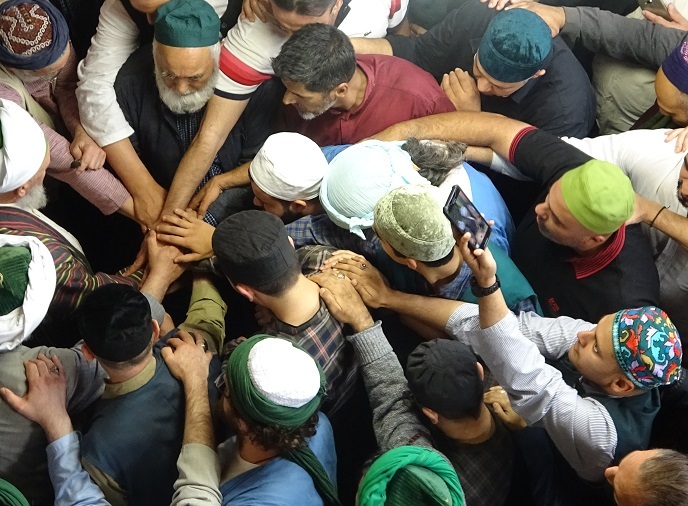Critical analysis of unedited texts shines light on key medieval patriarch
Sacred texts can reveal much about times past. The EU-funded SLLB project investigated the creation of sacred space in 14th-century Byzantium, on the basis of a little-studied body of late-Byzantine saints’ lives composed by Philotheos Kokkinos, the patriarch of Constantinople in the second half of the 14th century. SLLB produced critical editions of two previously unedited hagiographic texts composed by Kokkinos: his discourse (logos) on All the Saints and that on the Twelve Apostles. The third aim of the project was to investigate the representation of women in Kokkinos’ hagiographic works. “A late-Byzantine man of letters, theologian and ecclesiastical figure, Kokkinos’ importance for the political and ecclesiastical scene of 14th-century Byzantium is difficult to overstate,” says Mihail Mitrea, Marie Skłodowska-Curie fellow at Newcastle University and SLLB lead researcher. “Kokkinos graced the patriarchal throne twice and played a leading role in orchestrating the societal breakthrough of hesychast theology which is a monastic practice of silent prayer that has remained at the core of Christian Orthodoxy up to this day,” Mitrea notes.
Spirituality and space
One of the most surprising and promising results of the project was the relationship uncovered between hesychast spiritual experiences and spatial setting. “The exercise of obedience was best achieved in monasteries or in their vicinity, under the supervision of a spiritual father, while the devotion to God through prayer and mortification of the body often required withdrawal from the world in remote and inaccessible places,” Mitrea explains. Through the practice of inner spiritual tranquillity it promotes, hesychasm poses an interesting challenge to established modes of monastic life, since, at least theoretically, monastics could attain inner quietude regardless of their location. This project uncovered that holy men indeed pursued a hesychast way of life not only in solitude, but also as part of a monastic community, both in an urban environment and outside of it, apparently free of the constraints of a specific type of natural or social setting. This finding has important implications for the spread and continuity of hesychasm up to the present day. “The next step in this line of research would be to expand the number of saints’ lives analysed and to inquire further into holy men’s patterns of movement in search of hesychia,” Mitrea adds.
Digging deeper
The two edited texts reveal much about Kokkinos’ views on holiness. He underlines in the introduction to the ‘Logos on All the Saints’ that the goal of ‘the present account’ is not to simply eulogise the saints. It is to show what the cause of the sanctification and deification of human nature is. Mitrea explains: “Kokkinos essentially means that the road to sainthood is accessible and can be attained by everyone.”
The portrayal of women was often derogatory.
“The analysis uncovered that women, to a greater extent than men, are presented as distrustful of the holy men, gossiping, and ‘vainglorious, unstable, and flighty.’ These depictions of women as unstable and distrustful undermine their credibility. This advances the hagiographer’s purpose of promoting the holy figures and denegrating the scepticism they faced,” says Mitrea.
Keywords
SLLB, Byzantium, Philotheos Kokkinos, spirituality, heroes, texts, sacred, landscapes







